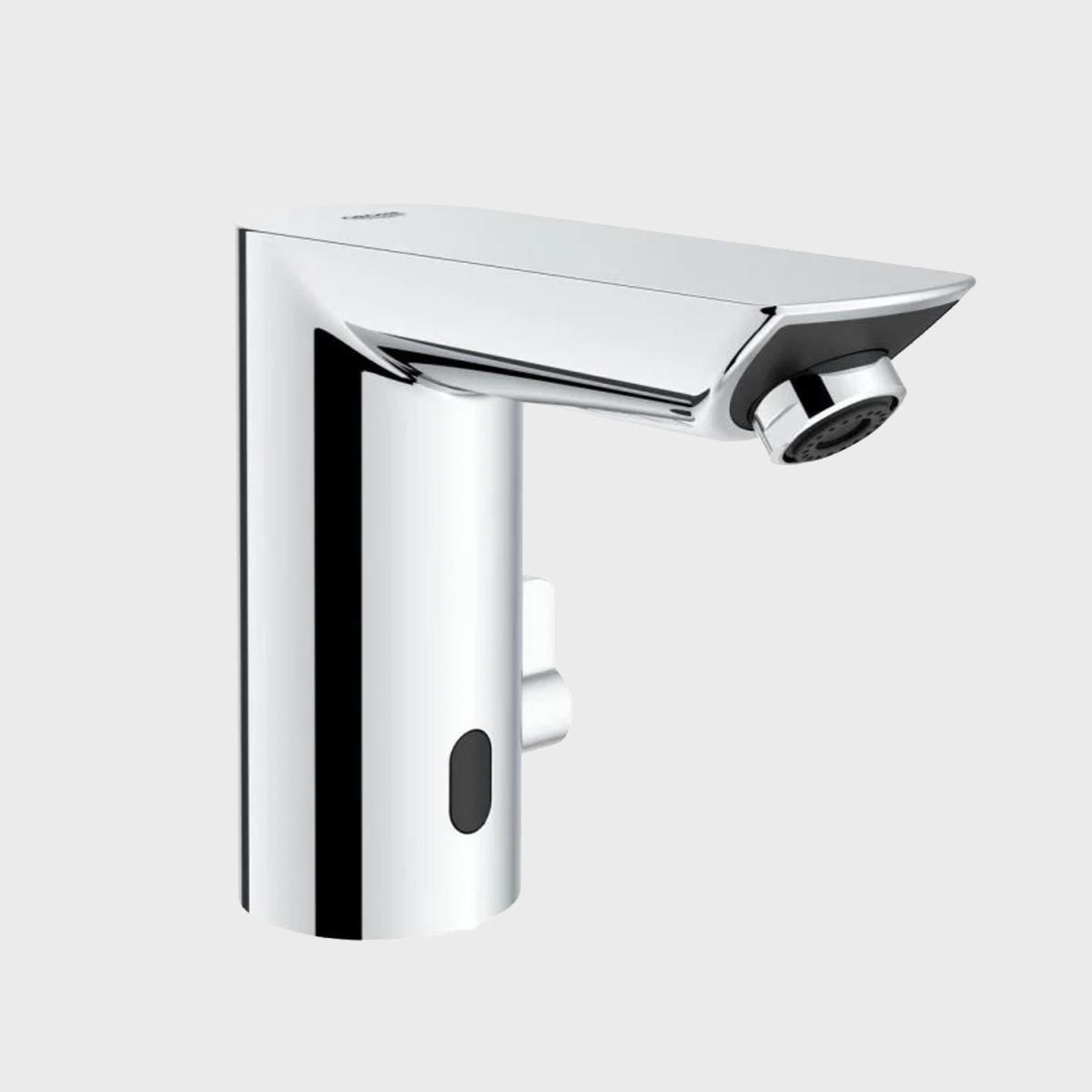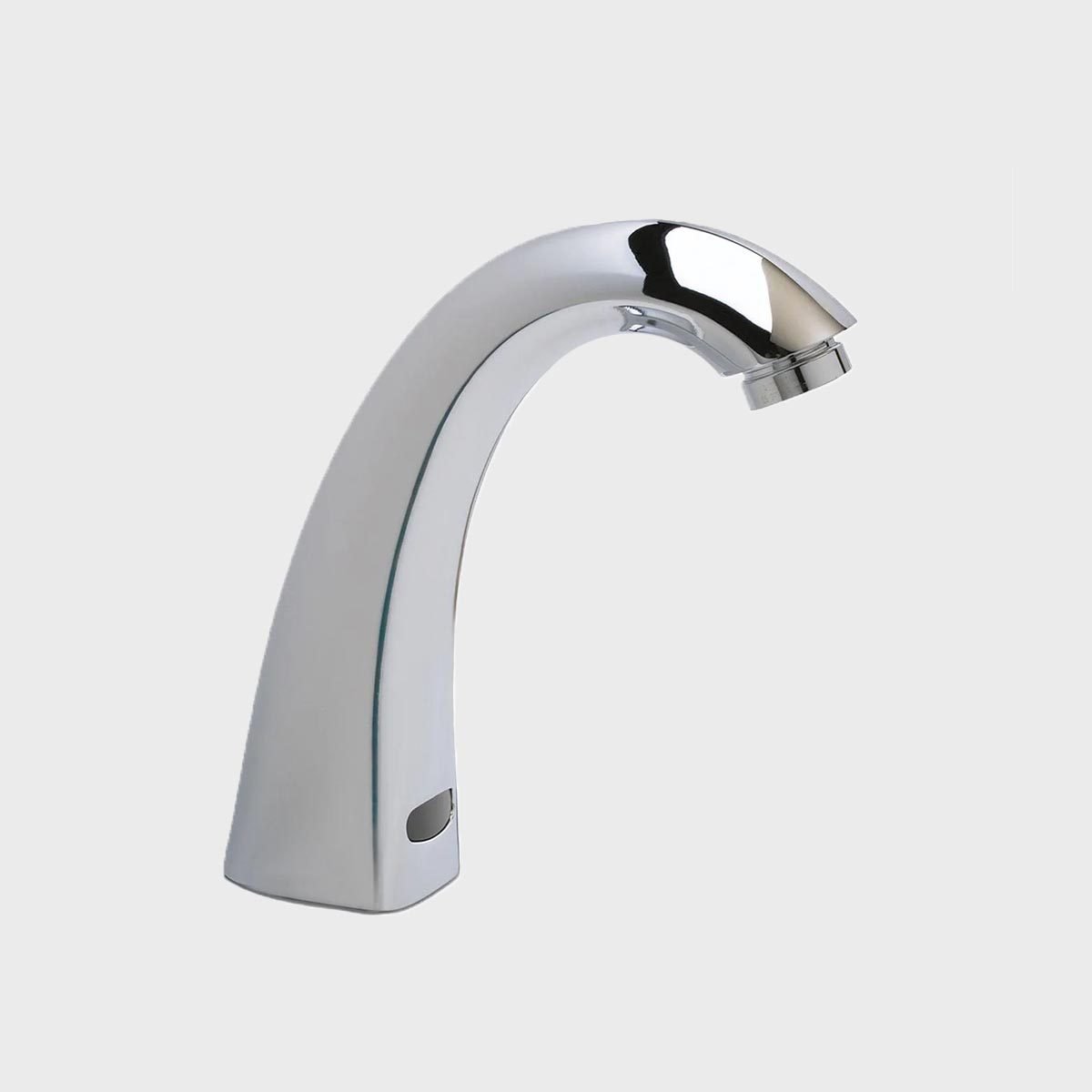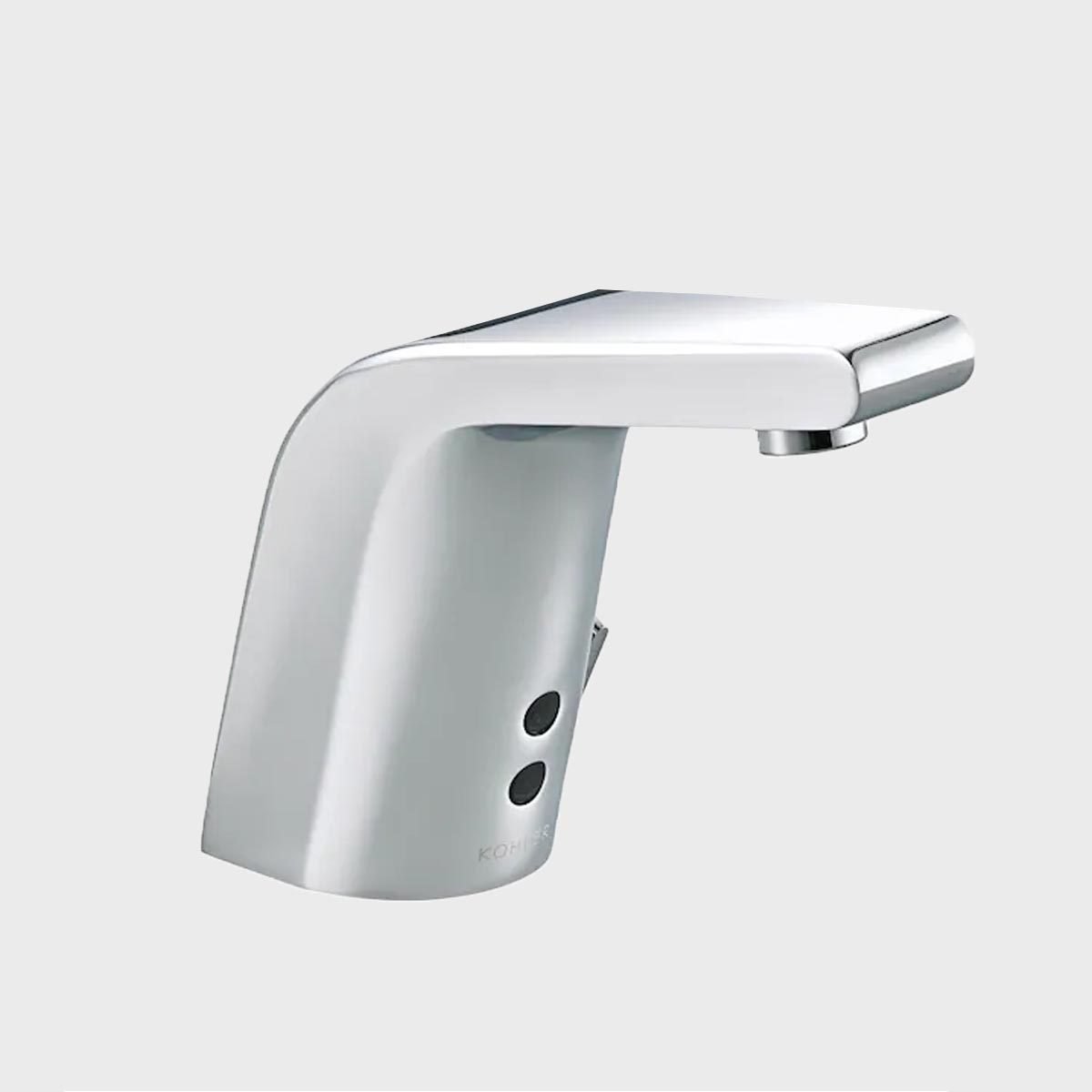Touchless and sensor-operated plumbing fixtures have been around since the 1970s. But it wasn’t until the 1980s, when they began turning up in airport restrooms, that most Americans became familiar with them.
Turning on water without touching the faucet or handle offers many benefits — conserving water, preventing germ transmission and increasing user accessibility. Today, touchless faucets are affordable for homeowners and widely available at home improvement retailers nationwide.
How Do Touchless Faucets Work?
Residential touchless bathroom faucets work like the commercial-style versions you see in hospitals or airports: An infrared sensor controls the flow of water. When you place your hands in front of the sensor, it sends a signal to the valve, turning the water on. Once you remove your hands, the sensor disengages the valve and shuts the water off.
This means less wear and tear on your fixtures and fewer components to maintain, according to Michael Green of Benjamin Franklin Plumbing. He says this makes cleaning the faucet easier, too, since there’s less area for unwanted residue to accumulate.
Touchless Bathroom Faucet Features
Like traditional manual faucets, touchless models offer variety in their individual features. To ensure you’re buying the best touchless faucet for you and your bathroom, keep these things in mind:
- Convenient activation options: Besides standard operation, some smart faucets feature settings and options like auto-flush, which periodically clears the water line of stagnant water. Some also offer convenient timer settings to customize the precise time the valve is open — ideal for reducing water waste. Green says leak-detection and voice commands are other useful options to consider. Take some time to think about what would be most convenient for you.
- Reliable power source: All touchless bathroom faucets require a power source, typically a battery pack or adapter that plugs into an outlet. Battery-powered options tend to be less expensive, but you do have to replace the battery occasionally. Plug-in options are convenient, but chances are you’ll need to install an outlet first unless your bathroom has one under the sink. Also keep in mind plug-in faucets won’t work during a power outage.
- Easy-to-maintain finish: Though touchless faucets are inherently easier to clean than traditional manual faucets — less touching means fewer fingerprints — they’ll still attract toothpaste, soap and other cosmetic residues. Choose an easy-to-maintain finish. Chrome, stainless and brushed nickel are all great choices for their durability and resistance to corrosion. Plus, they’re easy to wipe down.
How To Install a Touchless Bathroom Faucet
Touchless bathroom faucets, especially battery-powered and plug-ins, can be simple for the average homeowner to install. However, as we mentioned above, for a plug-in you may need to add an outlet under your sink. That can be tricky. Green recommends consulting with a pro before diving into a DIY wiring project. If you’re unsure, hire an electrician to do it for you.
After that, proceed as follows:
- Turn off the water to the faucet. There should be a supply valve under the sink. Turn it clockwise to close the valve.
- Remove the old faucet. Disconnect the supply lines, remove any locknuts and pull it away from the sink. You may need to use a wrench for this step.
- Place the new faucet on the sink. Depending on the layout of your sink, you may need to add a deck plate to cover any extra holes. Secure it in place according to the touchless faucet installation instructions.
- Connect the new supply lines. They should attach to the supply valve in the same way the old faucet lines did — hot water on the left, cold water on the right.
- Connect the power supply. This will vary depending on your specific faucet, but will typically require attaching a battery pack or plugging into a wall outlet.
- Turn on the water. Turn the supply valve counter-clockwise to open the valve back up.
- Set up the faucet: Touchless faucets can vary in their setup and programming, so be sure to follow the instruction manual. Some hassle-free models might not require any setup at all.
The Best Bathroom Touchless Faucets
Touchless bathroom faucets tend to cost more than traditional models, though they do come in a range of budget options.
Best value touchless bathroom faucet

The battery on the Grohe Bau Cosmopolitan Touchless Bathroom Faucet should last for seven years, according to the manufacturer, making it a great option for those who want to avoid frequent battery changes.
Though it’s less expensive than other models, it still offers an automatic flush setting and thermal disinfecting mode that should make it even more hygienic than a standard faucet. Plus, the color-coded temperature control lever (an important safety feature) is easy to adjust.
Best mid-range touchless bathroom faucet

For those who appreciate the minimal design and heavy-duty construction of a commercial-style model, consider the Delta Commercial Battery-Powered Touchless Bathroom Faucet. Its works effectively even when confronted by issues that sometimes fool or confuse a sensor, like light reflection or dry skin.
Installing this battery-powered faucet is more involved than other options — you’ll need to set the temperature and other settings below the sink. But if you have the know-how or are willing to hire a professional, it may well be worth the effort.
Best high-end touchless bathroom faucet

Although it costs more than most other touchless options, the hassle-free operation of this Kohler Insight Touchless Bathroom Faucet makes it a great splurge.
After installation, this faucet scans the surrounding area, gathering the necessary information to prevent false triggers and ensure it’s always working as efficiently as possible. It takes two AAA batteries, purported to last at least three years. The polished chrome finish should allow you to easily keep it clean of residue and fingerprints.






